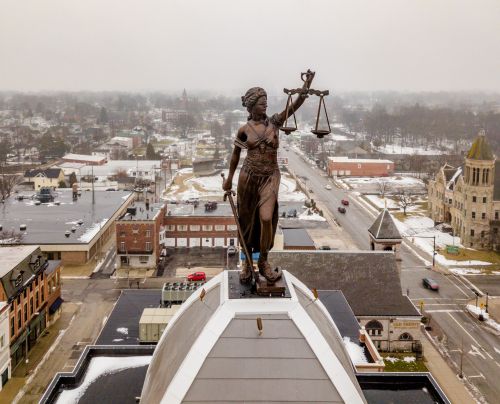Our Community
The history of Tiffin & Seneca County dates back to 1812. The familiar bronze statue of The Indian Maiden standing on Frost Parkway near Miami Street marks the site of Fort Ball, which was a military depot of the war of 1812. Fighting an engagement of that war, Erastus Bowe first sighted the location upon which Tiffin now stands.
Fort Ball, completed in July of 1813, was erected on the west banks of the Sandusky River at a point, which today is the foot of Miami Street in Tiffin. This location was ideal – close to the water with a good view up and down the river, and within its confines an ever-flowing spring of pure, cold water. Erastus Bowe was so taken with this area during his sojourn in 1813 that he returned in 1817 and for over 46 years, until his death, lived here.
In 1817, he returned to the site and built his Pan Yan Tavern, which later became a stagecoach stop, on the north bank of the Sandusky River. Early homesteaders followed soon after Bowe, and the settlement of Oakley sprang up around the Pan Yan. The main traveled road of the area followed the path of the stagecoaches through Oakley, called Fort Ball after 1824.
In 1820, Josiah Hedges purchased a piece of land on the south bank of the river opposite Oakley and founded another settlement. He named this village “Tiffin” in honor of Edward Tiffin, first governor of Ohio and later member of the United States Senate, and a man who had fought long and brilliantly to finally win statehood for the Ohio Territory in 1803. Tiffin was incorporated by an act of the Ohio Legislature on March 7, 1835.

In 1824, with the establishment of Seneca County by the Ohio Legislature, Tiffin became a county seat. The county took its name from the Seneca Indians, who originally were native to this territory.
Oakley and Tiffin, split by the Sandusky River, were great rivals. But, in 1850, seeing that later their interests lay together, the two villages merged to form greater Tiffin, with Fort Ball becoming a part of Tiffin in March of that year.
Seneca County was known principally for its agricultural products, and consistently rated in the upper 12% of the 88 counties in Ohio in gross farm income until the year 1888 when oil was discovered in the area. Oil attracted industry and by 1900 numerous manufacturing concerns had moved to Tiffin and Seneca County. Industrial growth has continued to the present day, adding greatly to the economic progress of Seneca County.
